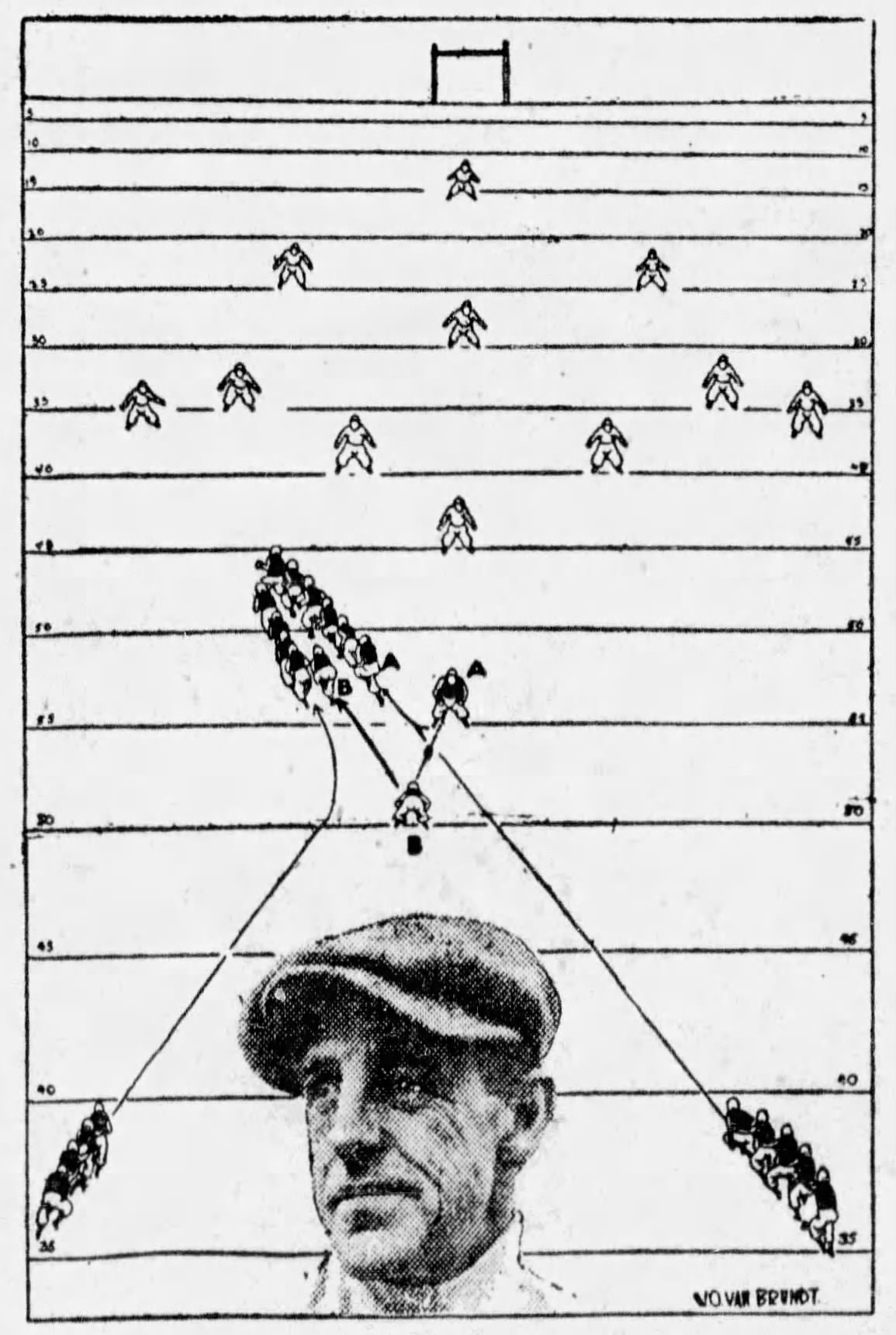Today's Tidbit... Shooting Down The Flying Wedge

Lorin Deland developed the flying wedge, which Harvard showed for the first time in the 1892 Harvard-Yale game. As football was played at the time, kickoffs occurred at the start of each half and following each score. Unlike today, the team that had been scored on did the kicking, but they retained possession by kicking the ball a few inches or feet (like soccer) before picking it up and running with it (unlike soccer). Deland's innovation was to have nine of the kicker's teammates align in groups of four and five, ten yards behind the kicker, and rush forward on a signal. The team's fullback also aligned a few yards behind the kicker. The fullback delayed a moment after the signal and then started forward to receive the ball from the kicker just as his teammates slipped past him in a wedge heading downfield.

Since the flying wedge led to more injuries than even 1890s footballers could justify, it led to two rule changes in 1894. One required the kicker to send the ball at least ten yards downfield, and the other made it illegal for more than three players on the team possessing the ball to mass more than five yards behind where the ball was put in play.
Those rules ended the kicking team’s use of the flying wedge, but receiving teams began using the wedge by positioning blockers near the 20- or 30-yard lines. Post-kick, they gathered in front of the return man, linked arms, and ran forward in a wedge. This version of the flying wedge also led to many injuries, so when the rule-makers passed several safety-oriented rules in 1910, they banned players on the team possessing that ball from pushing or pulling the runner or interlocking arms.
While the 1910 rule eliminated interlocked arms everywhere on the field, it did not stop blockers from forming a wedge or phalanx on kick returns. Return teams still positioned players close to the returners to form a wall of blockers without interlocked arms.

The YouTube video below demonstrates the wedge on a kick return. (The uniforms and helmets suggest the demo was filmed in the late 1920s, not the 1910s as labeled.)
In 1931, however, the nation's newspaper reported that the number of football deaths that year had spiked to fifty, including a West Point player who died from an injury suffered in kick coverage. Following the season, Fielding Yost conducted a study that narrowed the death total to thirty -one player who had been reported dead was surprised to learn of his dire state- but with thirty football deaths, some things had to go, and the wedge was among them.
Along with other safety-related rule changes, the 1932 rules indirectly limited the wedge by requiring return teams to position at least five players between ten and fifteen yards from the spot of the kick. Positioning five players closer to the kicking team made it more difficult for those five players to drop back and form a wedge on the return, though they still tried and often succeeded.
Return teams continued using the wedge, and kicking teams continued celebrating their wedge busters, highlighting the potential for concussions on every kickoff. Finally, the rules committee targeted the wedge directly, as seen in the 2012 NCAA Rule Book, Rule 6, Article 10:
A wedge is defined as two or more players aligned shoulder to shoulder within two yards of one another.
b. Free-kick down only: After the ball has been kicked, it is illegal for three or more members of the receiving team intentionally to form a wedge for the purpose of blocking for the ball carrier.
It took another seven years for the rule makers to recognize that allowing three-man wedges made little sense. As a result, a 2019 change made it illegal for two players to form a wedge on kickoff returns. Banning players from aligning shoulder to shoulder on kick returns effectively eliminated the wedge from the kicking game.
Football Archaeology is reader-supported. Click here to buy one of my books or otherwise support the site.



An ironic note: Percy Haughton died a month before the publication of the article depicted herein.
Yep. The full article mention him as the "late" coach.